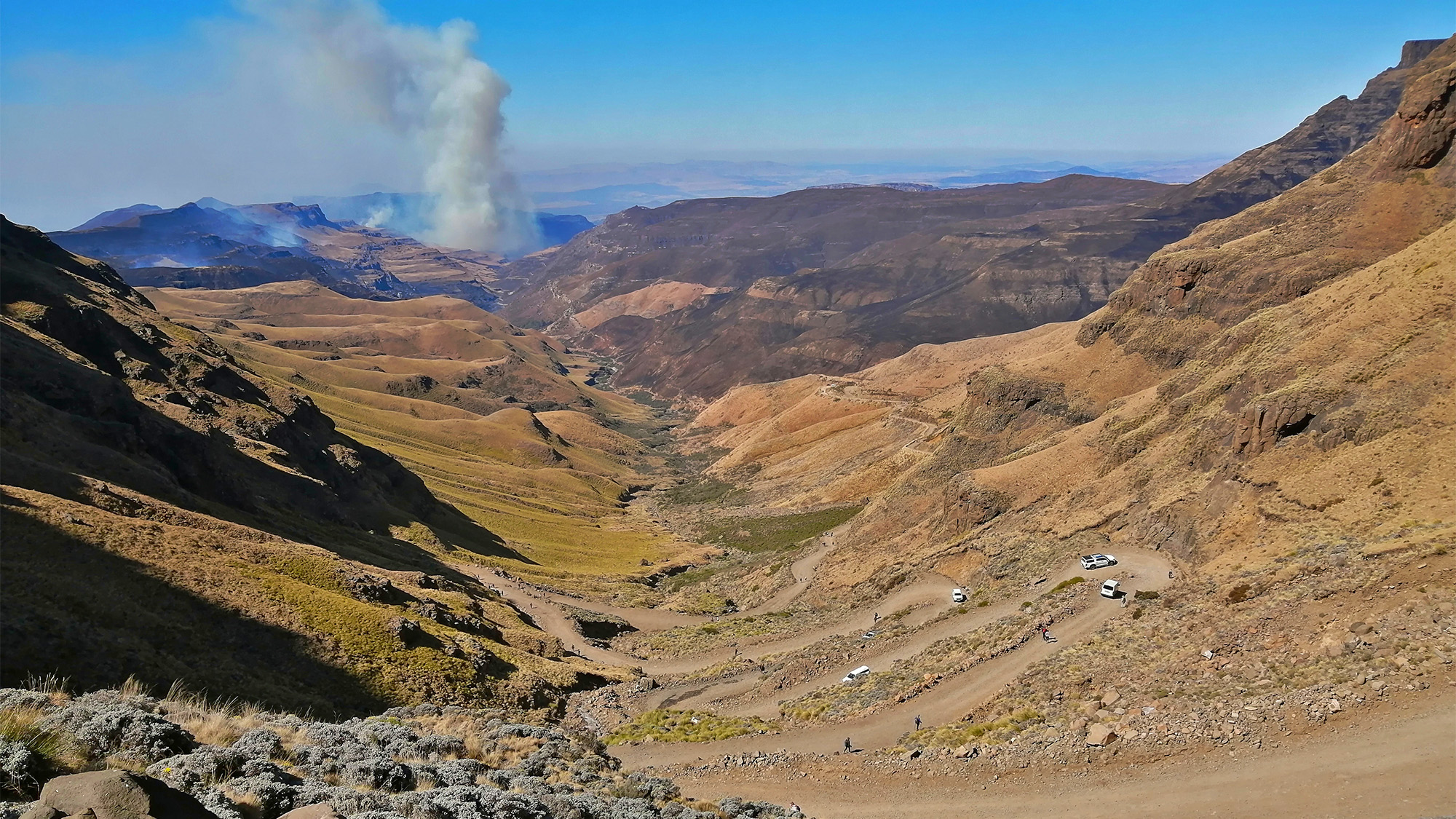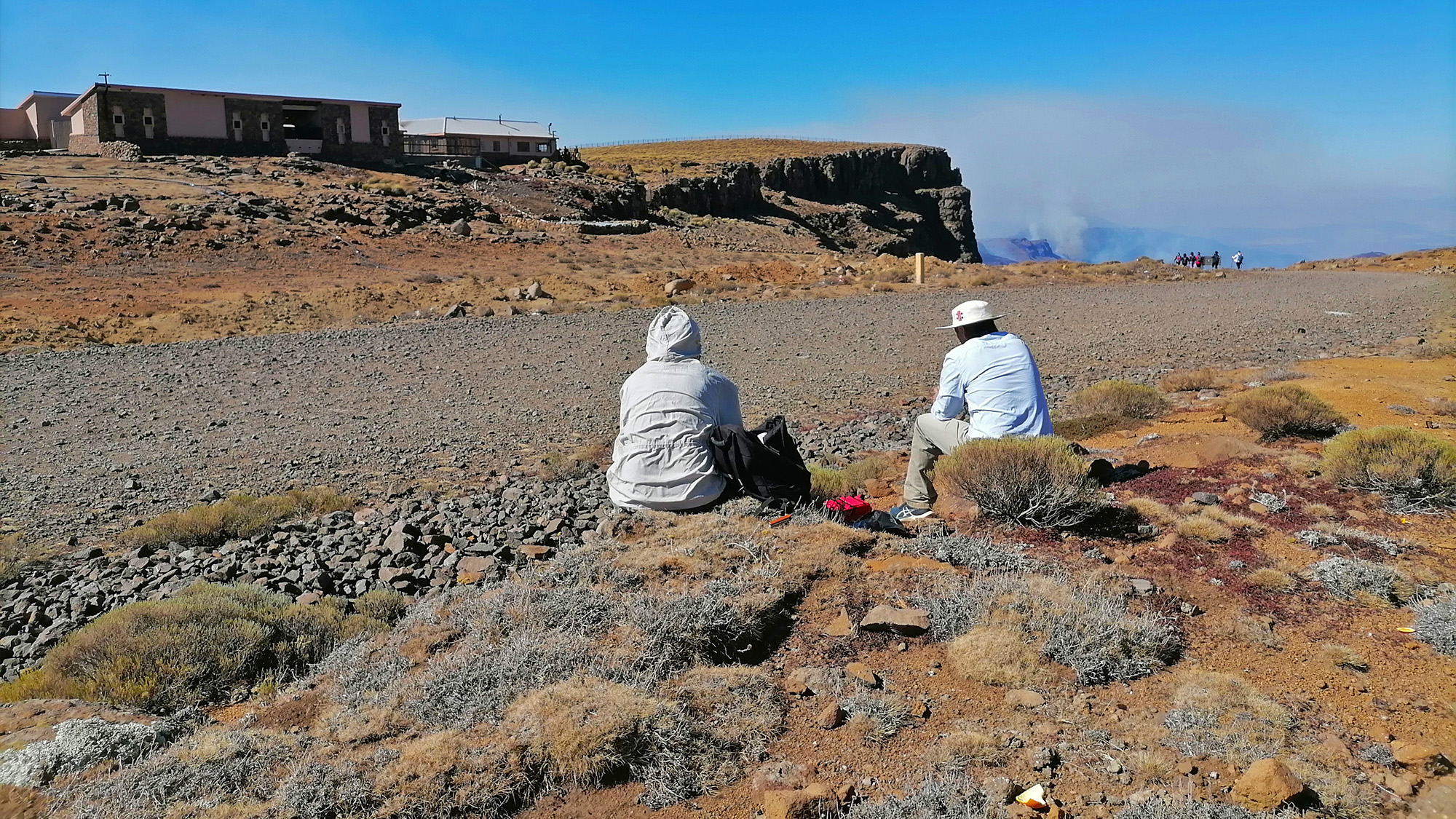The CHOC Walk Up Sani Pass is an annual hike that takes adventurers up the rugged Sani Pass, all in support of children affected by cancer.
- The Sani CHOC Walk is a challenging and rewarding annual hike up South Africa’s iconic Sani Pass.
- Sani Pass, often referred to as ‘the mother of all South African passes’, is a challenging 8km ascent and descent, totalling 16km of rugged terrain.
- Despite the physical demands, participants find the experience rewarding, uniting in a shared goal of conquering the pass and aiding a worthy cause.
- Visit www.sandtontimes.co.za for more stories.
Sometime back, I stumbled upon a list of must-do activities in the Drakensberg. The list featured iconic experiences like climbing to the top of the Amphitheatre, listening to the melodious Drakensberg Boys Choir, staying at a campsite under the stars, summiting one of the peaks, and of course, driving up Sani Pass.
In December 2023, I finally ticked one off that list by driving up Sani Pass. But little did I know that my adventure with this iconic pass was far from over. A friend later recommended hiking up and down the pass as part of the annual CHOC Walk Up Sani Pass, a charity event supporting children affected by cancer. This year, the walk took place on 10 August 2024, and I found myself lacing up my hiking boots, ready to conquer Sani Pass once again – this time on foot.
Nestled in the Southern Drakensberg, near Himeville and Underberg, the Sani Pass borders South Africa and the mountain kingdom of Lesotho. The average gradient is a modest 1:20, but as you near the top, it becomes a formidable 1:3 – meaning you climb 1 meter for every 3 meters travelled. With its twisting, gravelly roads and steep inclines, Sani Pass is as famous for its 4×4 adventures as it is for its hiking challenges. However, this time, instead of the roar of an engine, it was the rhythm of our footsteps that echoed through the pass.

The first CHOC Walk Up Sani Pass took place in 2010 with seventy walkers. Since then, thousands have participated in this annual event, with the most entries recorded in 2019 – an impressive 900 walkers. Even the Covid-19 pandemic in 2020 didn’t stop the event; it simply went virtual. This year, around 700 determined individuals took to the hills, walking not just for the challenge but for a cause.
Our group of five set off at around 9am – later than most. The border opens at 6am, allowing the earliest risers to get a head start. The hike starts off mild, but the key is pacing yourself, especially given the daunting climb ahead. Some in our group were eager and shot ahead, while others, like myself, took it slow and steady. The weather forecast promised sunshine, a mild mountain breeze, and clear skies. However, while it was warm in the lower regions, a cold mountain wind blew down from Lesotho, chilling us to the bone and turning some fingers white.
The road climbs relentlessly, twisting and turning as it ascends higher and higher. The gravel path is challenging, often compared to ‘walking on marbles’, but the stunning views and the sense of camaraderie among the hikers kept us going. Despite the wind and the smoke from fires that had been burning for days, we pressed on. The fires, which could be seen from the pass, had devastated parts of the lower hills, even razing one of the resorts to the ground, leaving some walkers without accommodation.
The real challenge lies in the last 2 to 3 kilometres. This section is steep, with loose gravel and numerous switchbacks that zigzag up the mountain. Here, the shadows are cold and breezy, and hikers pass by a frozen, ice-covered waterfall – a must-stop photo opportunity. It’s a tough slog, but the sense of achievement upon reaching the top is unparalleled.
At the summit, it’s traditional to cross the border into Lesotho and enjoy a beer at the highest pub in Africa. However, this year, with a R100 tourist fee to enter Lesotho and an additional R100 charged by the pub, our group decided to skip the beer. After all, we had already conquered Sani Pass – not just by motor vehicle, but by foot, one step at a time.
The descent is just as challenging as the ascent. While the climb worked our glutes, quads, hamstrings, and calves, the downward journey put strain on our thighs, backs, calves, and shins. The next day, my calves were so stiff that even walking felt like an effort, and my quads were constantly reminding me of the challenge we had just completed.

Despite the physical toll, the experience was incredibly rewarding. Along the way, we encountered couples, families, old school friends, and even a group dressed up with a small boombox, singing as they descended the pass.
We stayed in a lodge near Underberg, a region known for its trout fishing, mountain bike trails, and various accommodation options, ranging from backpackers to luxurious lodges. The CHOC Walk Up Sani Pass isn’t a race; it’s a personal challenge. The real winners are the children and teenagers affected by childhood cancer, who benefit from the funds raised by this event.
For your entry fee, R400 per adult or child over 16 years old or R300 per child under 16 years old, you get to participate in the walk, receive a t-shirt, and enjoy a meal prepared by the friendly folks from the Underberg Roundtable upon your return. It’s a great way to spend a long weekend, surrounded by the natural beauty of the Drakensberg, even if the views were occasionally obscured by smoke this year.
The next CHOC Walk Up Sani Pass is scheduled for August 2025. Whether you’re a seasoned hiker or a first-timer, this is one adventure you don’t want to miss.
Stand a chance to WIN with The Sandton Times.
Advertise on The Sandton Times today!
Head back to The Sandton Times Home Page for more stories.

![sandtontimes-choc-walk-up-sani-pass-002-[2000×1125] CHOC Walk Up Sani Pass](https://sandtontimes.co.za/wp-content/uploads/2024/08/sandtontimes-choc-walk-up-sani-pass-002-2000x1125-1.jpg)










